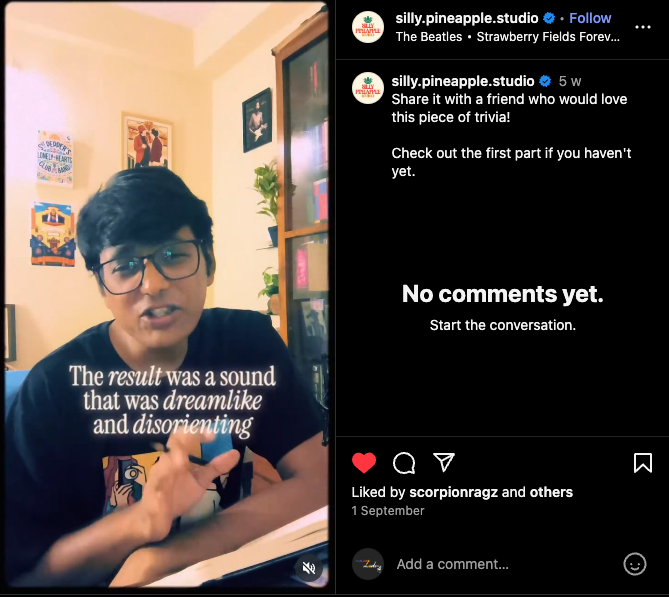Table of Contents
This is the world of Silly Pineapple Studio, founded by Samik Bhattacharya. He uses the shared languages of film and music to create merchandise that serves as an invitation – a way to spark curiosity and unite a community around shared passions. It’s a design-led business where the core strategy is simple: put community first and let the art find you.
Forget waiting for a brief. Design entrepreneurship in India is about building a business directly from taste, craft, and community. It’s a model where the designer becomes the founder, and a strong, unified philosophy dictates everything, from the product itself to the way it finds its audience.
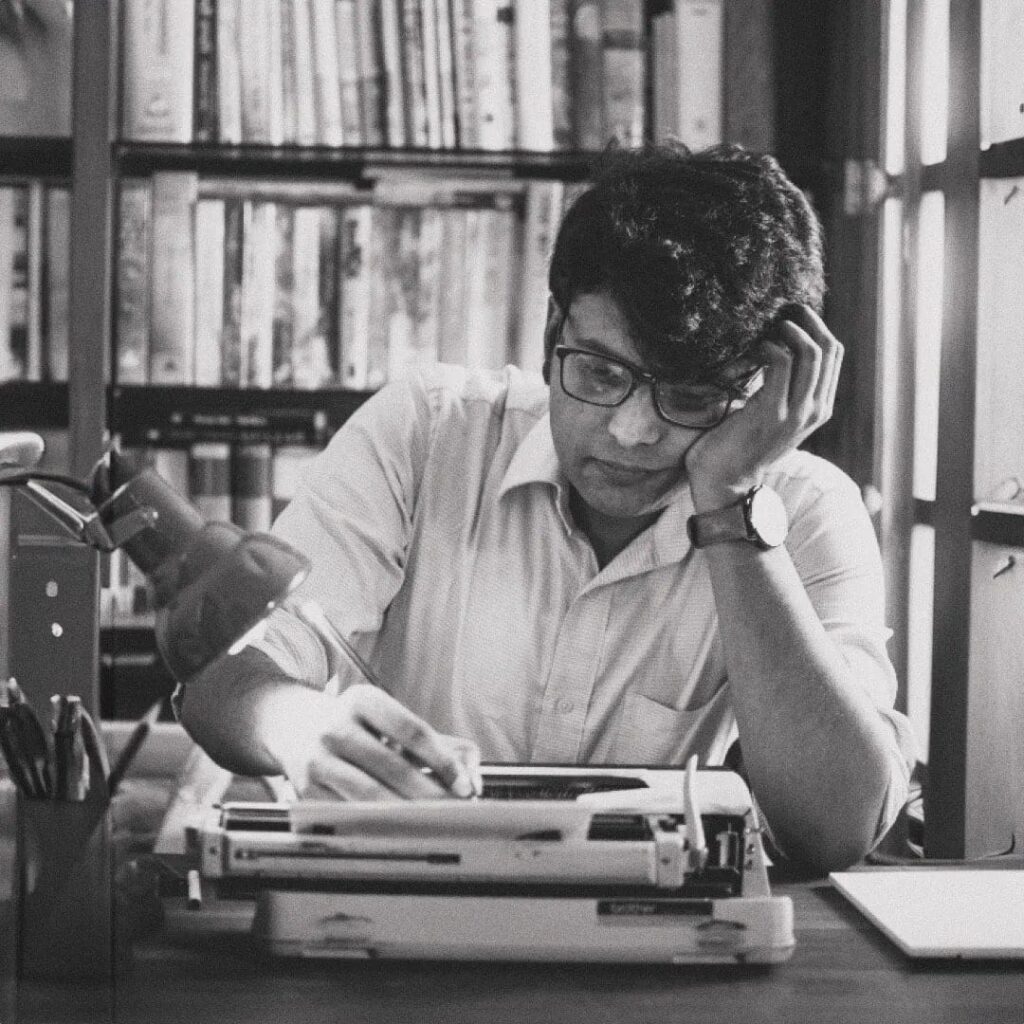
Over the last decade, Direct-to-Consumer (D2C) brands have rewritten the rules of the Indian startup space. Their success lies in building loyal communities by fostering a powerful sense of belonging. It’s a playbook we’ve seen mastered by brands like The Souled Store, Bewakoof, The Whole Truth, Paper Boat, Chumbak, and SUGAR Cosmetics; they’ve cultivated fierce loyalty by making their customers feel seen and represented through a shared philosophy.
To understand this new wave of design entrepreneurship from the inside, we spoke with Samik Bhattacharya. As the founder of Silly Pineapple Studio, a D2C marketplace for pop-culture merchandise, he creates products that tap into the shared languages of film, music, and culture. We wanted to hear the story directly from him.
Without further adieu, here’s Samik’s story.
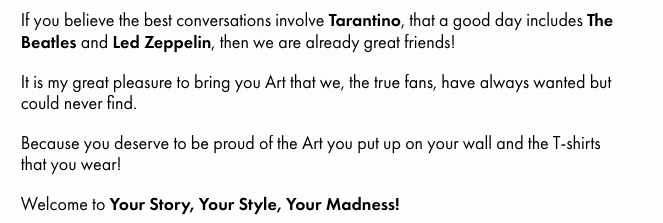
How does an IT engineer become a design entrepreneur?
Honestly, it felt more like a serendipitous shift than a grand plan. I’m an IT engineer by education, but I was always a massive cinephile. In my second year of college, I got my hands on Photoshop – the buggy CS2 version, and started experimenting.
My peers began asking me to design posters for college fests, and that quickly snowballed. Soon, I was taking on small paid projects, which was a revelation. This was nothing like my IT coursework; this was thrilling. I loved the feeling, that immediate dopamine hit of creating something, and I was hooked.
Samik Gets Serious
That initial creative spark led to a deeper realisation: to get better, I wanted to explore this vibrant world of graphic design and truly learn the craft. It was a journey of self-discovery. As the saying goes, the soul is drawn to uncovering mysteries that lie within oneself. To get better, I had to teach myself. I dove into graphic design and its history.
That initial creative spark led to a deeper realization: to get better, I had to immerse myself in the world of graphic design and truly learn the craft. It was a journey of self-discovery.
It’s funny, because even though I run a business, I don’t see myself as a traditional entrepreneur, at least not in the finance-oriented sense. I see this venture as an opportunity to do impactful work in a space I’m genuinely passionate about – art. That’s why starting my own studio felt like a catharsis. After a decade in design, I craved complete ownership over the quality and presentation of the final product. Agencies teach you invaluable skills, but the culture can be too controlled to bring a truly personal vision to life.
My heroes are designers like Paula Scher, Paul Rand, and Saul Bass – people who shaped culture. I wanted to channel their flair and independent spirit. That’s what ultimately drove me to build something of my own.
So here I am.
Tell us about the name, Silly Pineapple Studio. It’s memorable.
This is going to be embarrassing. The truth is, it began as a completely random name. When I was first experimenting with graphic design, I wanted a handle I could use to play around with ideas without anyone knowing it was me. ‘Silly Pineapple’ just came to me.
But the name stuck with me for a reason. The ‘Silly’ part was inspired by a quote I read in a design book years ago. I can’t recall the title, but the line was unforgettable: ‘If you are so afraid to be silly, then you will never accomplish anything remarkable.’ That idea resonated deeply with one of my core creative mantras: ‘Get all the bad ideas out of your head.’ It’s about giving yourself permission to experiment freely.
So, over six or seven years, the name grew on me. Subconsciously, it always felt right, and I could vividly picture the smiling pineapple logo. The idea for merchandise came much later, but when it did, the name was ready. My first passion, and still a core focus, is creating limited edition prints.
Silly Pineapple – The Philosophy
From the start, Silly Pineapple was never about making cold, hard sales. I’ve always been more interested in building a community – after all, who doesn’t want to find people who love the same movies and music? My motivation is to create a space where people can just hang out, be as silly as they want, and geek out over the things they love.
It’s a place where you can go on and on about the opening riff of Led Zeppelin’s ‘Whole Lotta Love,’ the golden years of Cartoon Network, the genius of Fellini and Bergman, or the enduring legacy of Batman: The Animated Series. The unifying factor in all of this is art.
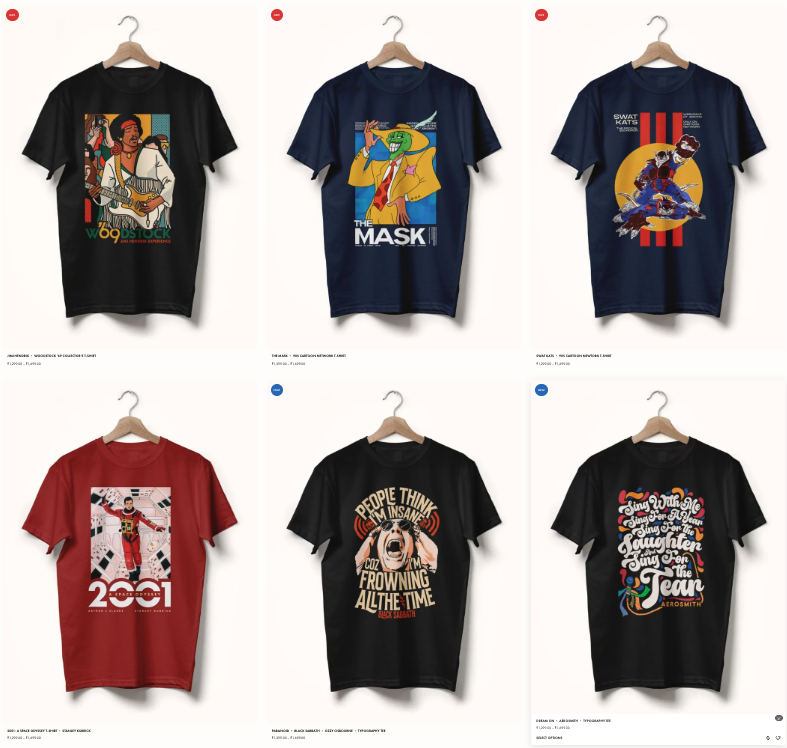
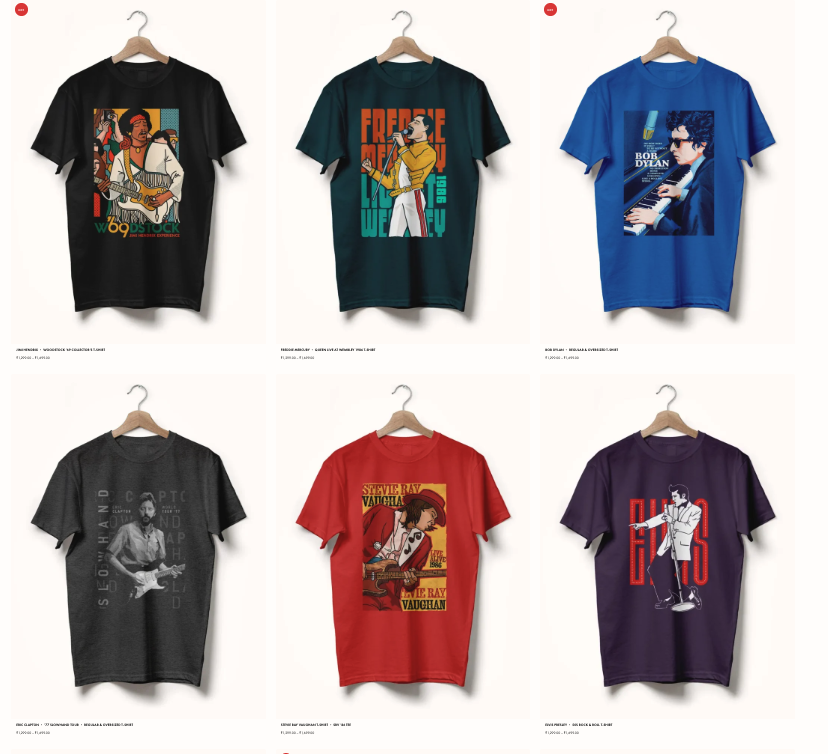
Art as the unifier
For me, that connection is personal. When I was a kid, the only way I could feel closer to these fictional universes was to draw them. Art was my entry point. And that’s the key: you don’t have to be a creator to be part of it. You can participate just by being a passionate spectator. That shared experience is what this is all about.
India’s D2C boom: how does classic art find a new audience today?
I’ve learned that a genuine interest in great art always endures. It has a way of surviving the harshest times, often in the most unexpected ways. While merchandise alone can’t bring back a bygone era, it can act as a spark. If a design on a t-shirt prompts even one person to ask, ‘What’s this movie?’ or ‘What’s that song?’, then it has done its job. It has planted a seed of curiosity.
As for cultivating that curiosity in younger generations, I believe it starts with the one before it. It’s a tradition, a handing down of culture. Like most Bengalis growing up in the 90s, my parents introduced me to the world of Tagore, R.D. Burman, Salil Chowdhury, and the films of Satyajit Ray and Hrishikesh Mukherjee. Since we grew up away from Calcutta, they made a conscious effort to keep that culture alive in our home. Those traditions are vital; they shape the values we develop from a young age and are something we must fiercely protect.
Today, that process of discovery has a powerful new tool. Gen Z has the entire internet at their disposal. While we live in overstimulated times, nothing stops them from following the breadcrumb trail of a newfound interest. That initial spark can lead them anywhere.
This is how discovery works – it’s a chain reaction. My own cultural education was built on these connections: I found Casablanca through When Harry Met Sally, Jimi Hendrix through Forrest Gump, F. Scott Fitzgerald through Midnight in Paris, and Led Zeppelin through School of Rock. I even learned to love jazz because of Woody Allen’s films, a debt I’ll forever owe him.
This is what I mean when I say the ‘art chooses you.’ While the connection you feel is intensely personal, shaped by your own life experiences, you’ll often find that people drawn to the same art share similar values. It creates an unspoken community.
That’s the experience I want to foster through Silly Pineapple. It’s about creating those sparks, exposing people to incredible cinema and beautiful music. To me, seeing that chain reaction begin for someone else is the most rewarding part of this entire venture.
Pop-culture brands vs the ‘aspirational’ chase: has nostalgia replaced it, and how will you evolve the business?
I believe what people truly want is to belong. Brands like The Souled Store and Bewakoof have tapped into this by harnessing the power of nostalgia – the very thing our parents hoped we’d grow out of. My mother still can’t believe a 35-year-old is buying a SWAT Kats t-shirt, but she doesn’t realize that for us, it’s not just a cartoon; it’s our childhood. Her generation has its own nostalgic triggers – Campa Cola, Kishore Kumar, Amitabh Bachchan’s angry-young-man phase, Sholay – but the emotion that gets tugged is universal.
This is a fundamentally different approach than that of ‘aspirational’ luxury brands. They sell a dream of who you want to become; we sell a confirmation of who you already are.
It took me time to build a business model around this. For the first few years, I was art-first, business-second. The most significant pivot I’ve made is to filter every decision through a single lens: does this strengthen our community? I’m inspired by creators like Colin and Samir, who prove that the most sustainable growth comes from building with your audience, not just for them. That’s the only way forward. I don’t want to guess what my community wants; I want to ask them and build it together.
Define your role in the creator economy
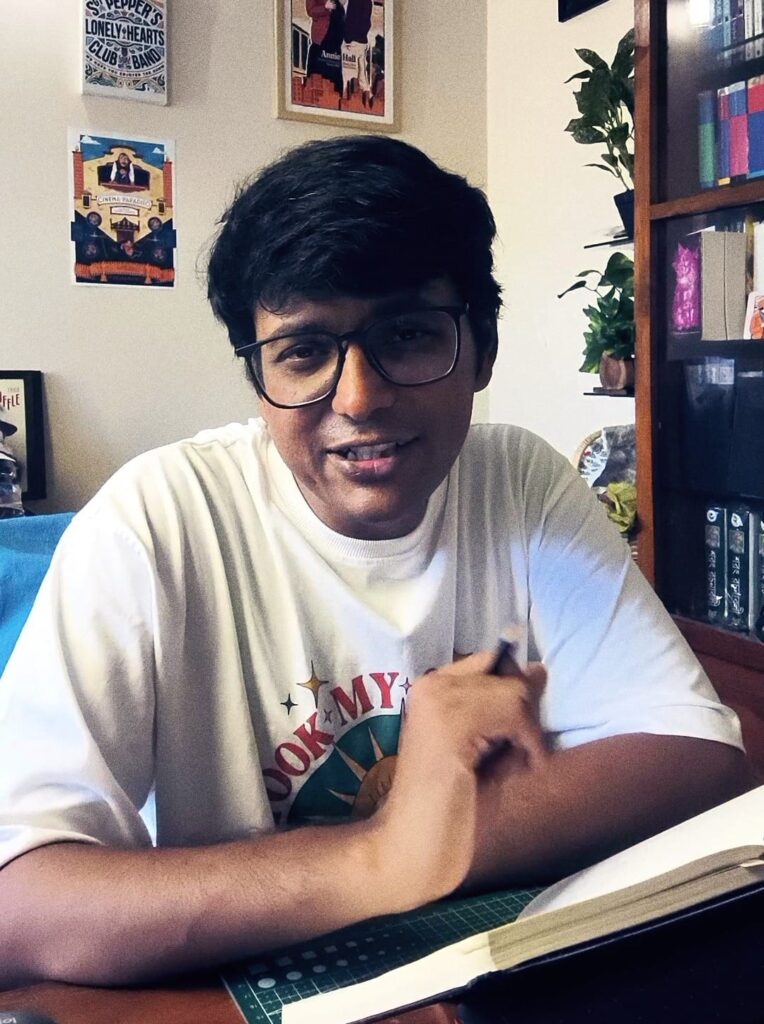
I see two distinct paths for design entrepreneurs today. There’s the path of the Expert, which people like Punit Chawla have perfected. They build a powerful brand around mastering and teaching a specific skill. It’s an incredibly smart and valuable model. I don’t know if I can ever reach that level of mastery given that I have so many varied interests; it’s so difficult for me to be an expert in one particular field.
Then there’s the path of the Storyteller, which is where I belong. My core passion isn’t to become an expert in a single technique; it’s to synthesize my varied interests – film, art, literature – into compelling narratives. My work is about exploring the fictional worlds that captivate us, whether through original characters or tributes to the masters.
My role in this ecosystem is clear: I’m not the one who teaches the ‘how’; I’m the one who focuses on the ‘why.’ I learn the technical craft from Punit, Unmesh Dinda, and Ben Marriot, and I use that knowledge to tell stories. They provide the tools; I build the worlds.
Classic Hollywood and 60s/70s rock vs Taylor Swift and superhero films…can they all coexist, and is gatekeeping pointless?
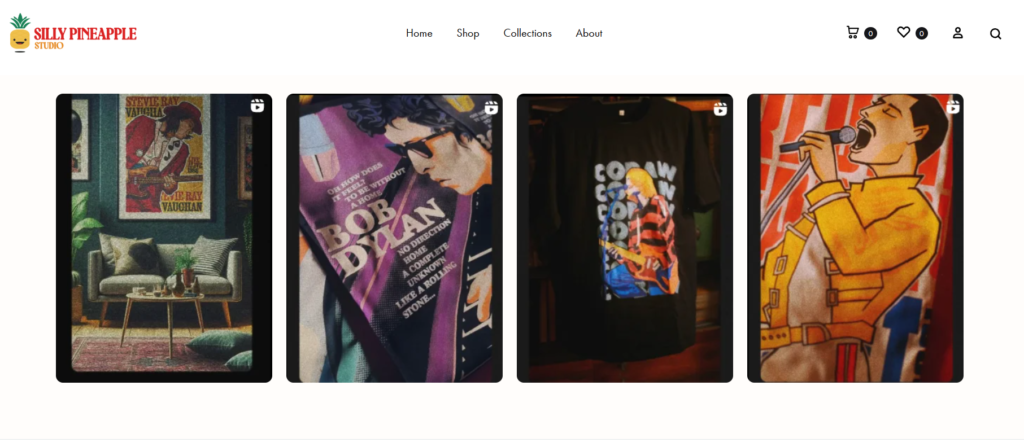
The idea that it’s Classic Hollywood versus Marvel, or Led Zeppelin versus Taylor Swift, is not the best way to look at things. Culture today is a multi-stage festival, not a competition. You can choose your main act, and no one has the right to tell you you’re wrong. There’s room for everyone.
More importantly, the algorithm of life is unpredictable. A random recommendation or a chance encounter can lead you to an artist or film that completely alters your creative DNA. That’s the ‘art chooses you’ principle in action. It happens when you least expect it.
So, can you gatekeep in 2025? Absolutely not. Even if you wanted to, you can’t. The gates have been torn down. Everything is accessible, and people will find what resonates with them, with or without a permission slip.
Your playbook for aspiring design entrepreneurs
Here’s what I wish I had known. Three simple rules.
- Your Brand is Your Business. Don’t treat personal branding as an afterthought. It is the work. I neglected mine for years, and it was a strategic error. Build your name with the same care you give your portfolio.
- Ship. Then Tweak. I have a graveyard of half-finished projects that died because they weren’t ‘perfect.’ Perfectionism is a trap. The most important skill is finishing. Get it out into the world. You can always iterate on something that exists; you can do nothing with an idea that lives only in your head.
- The Kids Are Your Consultants. The next generation of designers is already building the future. They are smart, fearless, and master new tools instinctively. Watch them. Learn from them. The ego that stops you from learning from a 22-year-old is the ego that will make you obsolete. To tell you the truth, I’m late to their party haha.
Beyond design, what other creative pursuits drive you?
Music and filmmaking aren’t just hobbies; they are essential parts of my creative identity. I’ve been a guitarist for 16 years, a journey that has been intensely personal. While I briefly played in a college band, I’ve always held my musical work to a punishingly high standard – so much so that I destroyed my earliest recordings. In hindsight, I see it as a mark of a relentless creative drive, though I do wish I’d saved them.
Filmmaking is where that drive has found its public voice. I started with two short films: one, a deeply personal story for a college fest that unexpectedly won an award, and another, a bare-bones film I made with my mother for a 7-day challenge that was shortlisted in the top 5 out of 500 entries. It was about the relationship between a mother and her son.
Most recently, I shot a feature in January 2024, now in the last stages of post-production. I’m composing the music and exploring festival submissions. Like the others, it’s personal: two people in a long-distance relationship get one day together, and talk about their lives before things change. I wrote the screenplay in 2019 when I was in a similar place. Two married friends kindly let me take over their beautifully set-up apartment for five days. The process was gruelling and exciting in equal measure.
I’ve got three unfinished scripts from my ‘writer’ phase about eight years ago. One is almost there – it just needs a final pass. I’m keen to finish it because the protagonist is obsessed with cinema, like me, I feel pulled back to it.
What should our readers explore to understand your influences?
Where do I start? We could be here all day. Off the top of my head, the films that shaped my outlook are Cinema Paradiso, Annie Hall, Midnight in Paris, Taxi Driver, the Before trilogy, Jules and Jim, Persona, Eight and a Half, Breathless, 2001: A Space Odyssey, Anand, Forrest Gump, Almost Famous – the list is endless.
When it comes to books, the character who has taught me most about life and navigating adversity – more than many people in real life — is Albus Dumbledore. Beyond that, I’m massively into Truman Capote, J. D. Salinger, F. Scott Fitzgerald, Mark Twain, Charles Dickens, Satyajit Ray, Rabindranath Tagore, to name a few. I can read them over and over.
However, there is one book that stands apart from all others in its raw power. This book reached down my throat and pulled out my heart: The Kite Runner.
We’d like to thank Samik for sharing his story and philosophy with us. It was a pleasure to explore the journey behind Silly Pineapple Studio.
Speaking with Samik is a reminder of a simple but powerful truth: sometimes, the things that mean the most are the things we’ve known the longest. It’s about reconnecting with a part of yourself you thought you’d lost – the childhood joy sparked by a cartoon, the feeling of a favorite song, the magic of a film that shaped you.
This is where design entrepreneurship finds its soul. A t-shirt or a poster stops being just an object and becomes an emotion. It’s a trigger for a memory, a shared language, a silent nod of understanding between strangers. While luxury brands sell aspiration, this kind of art sells something more fundamental: connection. It’s a reminder that the joy of feeling seen and understood should be for everyone. It’s not just a business model; it’s a mission to sell belonging, one piece of relatable art at a time.
Explore Silly Pineapple Studio
Silly Pineapple Studio is a D2C marketplace for pop-culture merchandise created to spark discovery and unite a community around a shared love for film, music, and art.
- Shop the Collection: https://www.sillypineapple.in
- Follow the Journey: Follow @silly.pineapple.studio on Instagram for deep dives into pop-culture history, product drops, and behind-the-scenes content.
- Connect with the Founder: Reach out to Samik Bhattacharya on LinkedIn to talk D2C, design entrepreneurship, or that obscure ’70s music reference you can’t shake.
